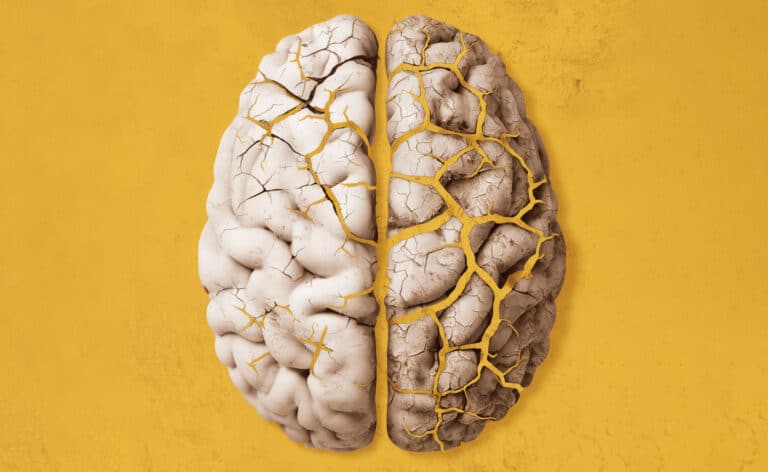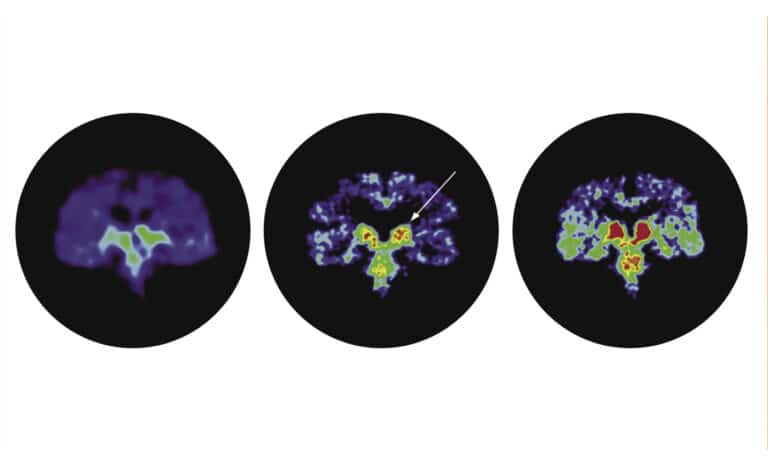By Laura Drucker
It wasn’t headaches that made Arija Inveiss think she might have a concussion. It wasn’t dizziness or sensitivity to light or any of the obvious symptoms you’d think might occur after a knock to the head. Rather, Inveiss, then a junior at Loyola University Chicago, suspected a concussion after a stack of freshly folded laundry fell over and she burst into tears.
“I’m not a very emotional person, so it was strange to me that something like that could set me off,” says Inveiss. Her inability to control her emotions sent her to a doctor, where she learned that she had in fact suffered a concussion after getting hit in the head during a recreational volleyball game four days earlier.
Inveiss’s experience speaks to one of the more puzzling aspects of concussions. The symptoms are rarely uniform––different people will experience different signs; a person who gets concussed multiple times will never experience the injury in the same way. And because concussions are chiefly diagnosed by self-reporting of symptoms, this isn’t just puzzling, it’s also dangerous.
Despite concussions becoming such a hotly discussed topic in the past few years, mostly in connection to the NFL, youth sports and the military, it’s an injury that continues to elude physicians and researchers. “We know very little about concussions as opposed to conditions like diabetes or stroke. It’s really a new field,” says Markus Chwajol, MD, a neurosurgeon at Presence Saint Joseph Medical Center and assistant professor of neurosurgery at the University of Illinois at Chicago.
As awareness has grown, however, so too has the field of research. Researchers are looking into whether biomarkers can help with concussion diagnosis and are studying drugs to potentially repair some of the damage to the brain. Also, youth sports are seeing better education about concussion risks; better equipment designed to prevent or monitor injury and increased recognition of symptoms from coaches.
Cracking the concussion code
Concussions are injuries on a cellular level. This makes them incredibly difficult to diagnose by a standard blood test or scan. There is no test that can conclusively diagnose them. Doctors rely on patients’ reporting of symptoms, but, according to Chwajol, it is estimated that about 30 percent of people don’t exhibit any symptoms within the first 12 hours of receiving a concussion. A study in 2005 showed that among people who experienced and were diagnosed with concussion, 88 percent did not recognize that they had suffered the concussion.
As clinicians learn more about what is going on in the brain after a hit, they are also learning what to look for. “One of the biggest misconceptions is that a concussion is this very structural injury, and that it’s bleeding or inflammation,” says Brian Babka, MD, a sports medicine doctor with the Cadence Physician Group, part of Northwestern Medicine. “The best analogy we use in the clinic is it’s like shaking a bowl of Jell-O—when the brain sitting in a pocket of fluid shakes in the skull, cells compress and elongate and shear, and they tend to slow down.”
This shaking of the brain disrupts the blood-brain barrier, a semipermeable divide that allows some materials but not others to cross from the bloodstream to the brain. After a head injury, the blood brain barrier might become leaky, and substances normally present only in the brain may cross the barrier and end up in the bloodstream. A study done at the Cleveland Clinic Concussion Center found that after a traumatic hit to the head, one key antibody protein—protein S100B—enters the brain through the blood-brain barrier. The clinic found a way to detect S100B in blood. Studies are currently under way to examine whether higher levels of S100B in blood might be related to the severity of observed concussions. Though testing for S100B is not yet used in practice, “it shows the advancements researchers are making in finding early, objective markers,” Chwajol says.
On the playing field, researchers are coming closer to being able to identify players at particular risk before the injury even occurs. For example, microsensors on helmets can monitor the force of hits and notify coaches if a player sustains a hit above a safe threshold. A test called the King-Devick quick concussion assessment examines players’ ability to quickly and accurately read numbers on a screen. Along with standard sideline evaluations, it has shown 95 percent accuracy in diagnosing athletes with concussions, according to Chwajol.
There has also been increased development and implementation of ImPACT Testing—a computer-based test that measures aspects of players’ brain functioning, such as reaction times and verbal and visual memory—everywhere from high schools to NASCAR. To obtain a baseline score, players are tested before the season starts and then again after a suspected concussion.
ImPACT testing can’t rule out a concussion, but it can help trainers confirm suspicions of one.
Like most injuries, concussions have different grades of severity. While a hit to the head is never a good thing, not all concussions put people at risk for the highly publicized damage of chronic traumatic encephalopathy (CTE), a progressive degenerative disease of the brain found in athletes with repetitive brain trauma.
“Sometimes the hardest thing is convincing people that while a one-time or two-time concussion is one thing, the chronic repetitive subconcussive blows that cause some of the long-term [problems] are actually a different beast,” Babka says.
Defining the spectrum—from concussion to postconcussive syndrome to posttraumatic stress disorder (PTSD) to CTE and other neurodegenerative problems—is currently one of the key areas of study.
While clinicians are getting a better grasp on the short- and long-term dangers of concussions, they are still at a rather primitive stage of treatment. The most important modes of treatment are simply “passage of time and avoidance of stimuli that bring on symptoms,” Chwajol says.
Chwajol is hopeful, though, that we are on the cusp of seeing drugs that will combat concussions at the cellular level. Concussive hits result in the release of certain known excitatory neurotransmitters, such as glutamate. Studies have been done investigating various kinds of neurotransmitter inhibitors, which could offset the chemical imbalance that occurs. Other studies are looking into a drug that can potentially repair the blood-brain barrier and prevent harmful antibodies from passing to the brain. These studies remain in their infancy though—to date, they have only been done on animals or in limited human trials. In a 2011 piece for the Clinics in Sports Medicine journal, William Meehan, MD, director of the The Micheli Center for Sports Injury Prevention at Boston Children’s Hospital, notes that it’s
still too early to start placing much hope on pharmacological concussion treatments.
“The heterogeneity of injury forces, mechanisms, and postinjury signs and symptoms makes such a therapy a distant goal,” he says. Still, the studies, primitive as they are, speak to researchers’ evolving understanding of how traumatic hits affect the brain and show promise of a future where concussions are more comprehensively treatable.
To play or not to play
When concussions started gaining national attention, there was a marked pushback against youth sports. Undeveloped brains, poor reaction times and a general lack of overall strength and coordination make young people particularly susceptible to head injuries and their potential long-term effects. But increased education and efforts to make sports safer have resulted in more parents letting their kids return to the playing field.
“When all the concussion stuff came out, people were like, ‘The sky is falling; don’t play football; your head’s going to fall off,’” says Mark Mueller, president of Chicagoland Pop Warner Football and a football coach for more than 20 years.
Mueller says the stigma is decreasing. He credits increased education among coaches, players and parents, as well as safer rules—Pop Warner was one of the first youth football leagues to limit contact in practices. Pop Warner, like many other leagues and high schools, is now certified under USA Football’s Heads Up initiative, which trains coaches in safe drills and concussion recognition and response. Equipment is getting safer, too. Beyond better education in proper fittings, manufacturers are responding to concussion awareness and working to create more effective helmets, switching from foam padding to Kevlar, and experimenting with built-in sensors.
Both Babka and Chawjol are quick to stress that sports are not the enemy. Acknowledging risk and trying to decrease it when possible makes games safer, and the alternative—as Babka puts it, kids sitting in padded rooms—isn’t a better option.
Concussions continue to be a mystery in many ways, but the factors are not nearly as unknown as they once were. Researchers have come a long way in decoding the injury, and breakthroughs in diagnosis, treatment and prevention are on the horizon. Just as the conversation around concussions has changed drastically in the last decade, the conversation five years from now will sound very different from what it does today.










